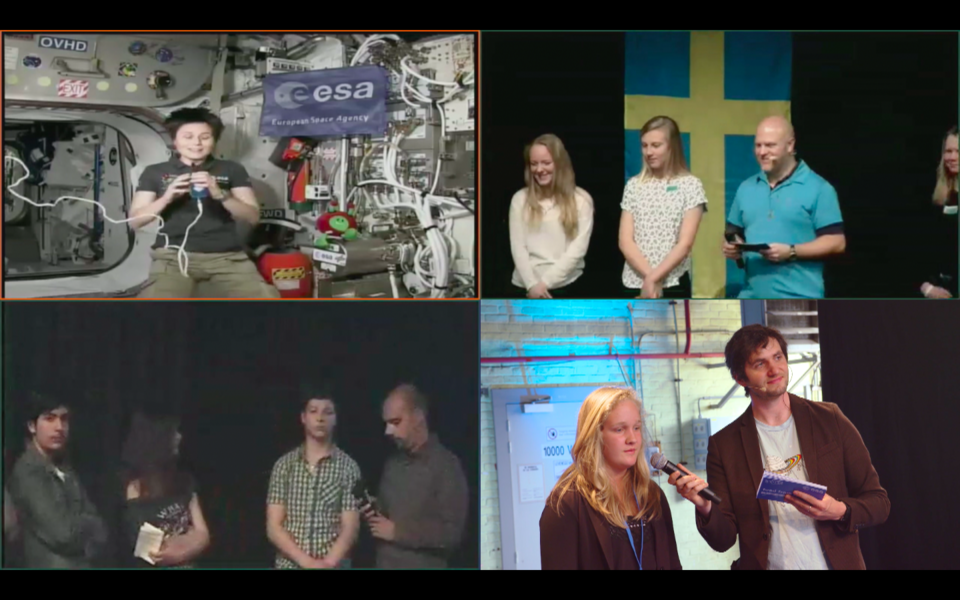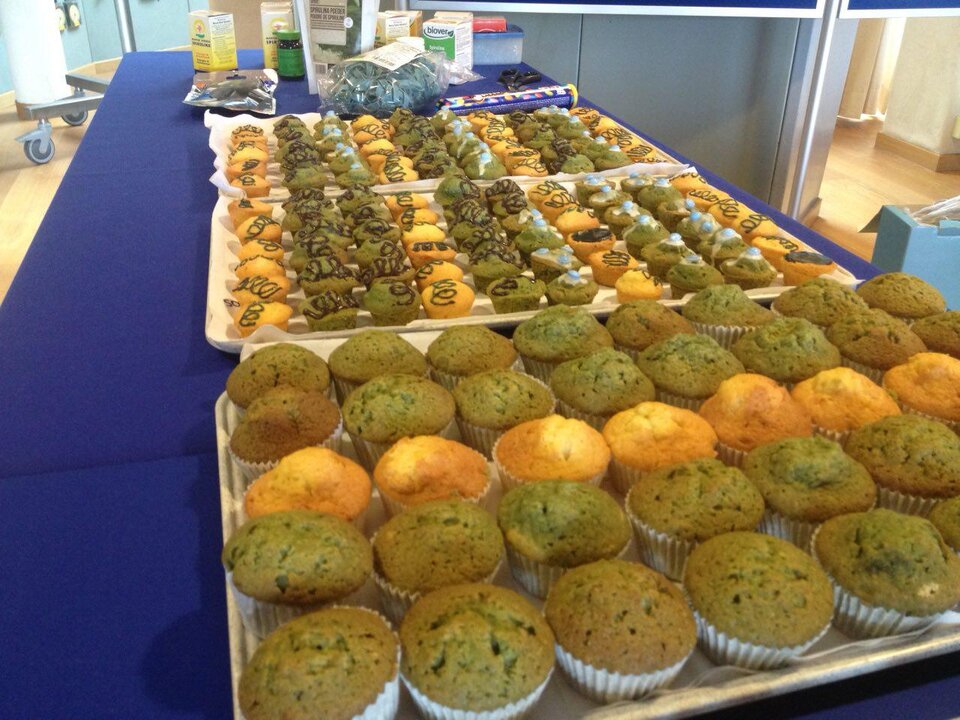Food from Spirulina project concludes
Arthrospira platensis was literally on the tip of everyone’s tongue last week when approximately 600 students from Sweden, Belgium and Greece participated in a multi-site in-flight call with ESA astronaut Samantha Cristoforetti.
Since the end of last year, schools throughout Europe signed up for the ‘Food from Spirulina’ biological experiment, which called upon students aged 14 to 16 to perform an experiment on cyanobacteria Arthrospira platensis, also known as Spirulina. As part of Samantha Cristoforetti’s education and outreach programme, ESA education in collaboration with ESA scientists developed an experimental kit to be used in the classroom which focussed on the fundamentals of cutting edge research in the 25 year old ‘Micro-Ecological Life Support System Alternative’ programme (MELiSSA).
If humans are to venture further into space, alternative systems which bypass the necessity for resupply cargo vehicles from Earth will need to be implemented. One solution being worked on, is the focus of the MELiSSA programme scientists who are aiming to define a complete ecosystem capable of replenishing oxygen, food and water for the crew.
Spirulina was identified as the ideal symbiont for such life supporting ecosystems not only for it’s ability to recycle exhaled CO2 into fresh O2 via photosynthesis but also due to it’s spectacular nutritious properties - low in DNA content, presence of all essential amino acids and a multitude of vitamins. Spirulina is commonly found in food stores and often sold as a ‘Super Food’ supplement.

In an attempt to bring cutting-edge space research and science into the classroom, ESA education office commissioned 1000 kits to be delivered to schools throughout ESA member states on a first-come, first-served basis. The kits were distributed early March and by early April several thousand students were writing up their reports, which - while the data is still being analysed by ESA education office - seems to have generated well over 80% success rate and clear O2 production in the samples the students exhaled into whilst the controls slowly withered away due to a lack of carbon sources.
The experiment thus demonstrated one of the principles of the MELiSSA programme and helped the students understand that the content of their lessons are more than ever relevant to real research and science at the forefront of space exploration.
For a few lucky students who participated in the experiment, ESA organised an in flight call with Samantha Cristoforetti. Borlange Framtidsmuseet in Sweden, SCK-CEN in Mol, Belgium and University of Crete in Heraklion were chosen to host hundreds of students for a day full of various space related experiments, activities and scientific lectures. As always with a live connection to the International Space Station, the atmosphere was electric and the ability for some 15 students to ask our crew member in space their question was an unforgettable experience.

All the students taking part in the day managed to have a taste of the celebrity of the day, Spirulina, whether it be in Swedish smoothies, Belgian waffles or space-qualified muesli bars, the students all went home with a satisfied appetite for science.
“The experience exceeded my expectations! I was fully satisfied with Samantha’s answers to all of our questions. I was also impressed of how friendly, warm, approachable and happy Samantha was”, Giorgos Aggelakis.
Christine Wintzer Science teacher from Ecole Europeene Bruxelles II said “This project has enabled my students to participate in the world of space and that of scientific research! What could possibly better to bring out scientific vocations.”
Jenny Jannson a Swedish teacher from Ludvika said " I have never seen my students so engaged! Their eyes full of the magic of science! A once in a life time experience!"